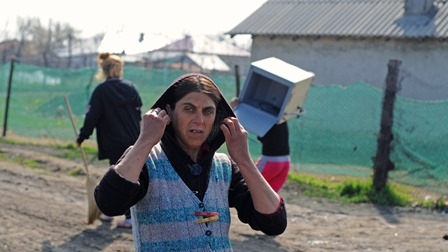Improving opportunities for marginalized Roma is good for the economy
Although many Roma families reside in highly developed countries in Central and Eastern Europe, they nonetheless have to cope with levels of poverty and deprivation on par with the poorest areas of the world, and face bleak economic prospects due to persistent unemployment and low levels of education.
“Improving opportunities for marginalized Roma is not only a human rights imperative but is also good for the countries’ economies,” says Carolina Sanchez-Paramo, World Bank Poverty Global Practice Manager conference presenter.
According to World Bank research in Bulgaria, the Czech Republic, Romania and Serbia, investing in Roma inclusion to equalize opportunities in the labor market is expected to have significant economic and fiscal returns. Moreover, as populations in Europe age and shrink, increased employment among Roma is essential - to help shoulder nationally rising costs of pensions, health care, and other expenses associated with aging. Closing the employment gap for Roma could potentially add as much as 9.9 billion Euros annually to the economies of these four countries in increased output, and 3.5 billion Euros annually in fiscal benefits. This suggests that Europe cannot afford to exclude Roma.
Introducing an integrated approach
There is a wide range of reasons for poor employment outcomes among Roma, many of which are difficult to tackle. Discrimination and poor skills are two main challenges, but there are a number of other barriers to employment as well.
“Low skills, distance from work, personal indebtedness are constraints Roma face in getting employed,” says Mamta Murthi, World Bank Country Director for Central Europe and the Baltics.
“Active labor market programs often focus on one individual constraint and this is not enough. What is needed instead is a comprehensive activation strategy that addresses multiple barriers at the same time and deals with discrimination by working to change minds bottom-up, employer to employer. This also needs a much bigger role for social work and collaboration between labor offices and social welfare offices.”
A new World Bank study looking at ways to improve opportunities for Roma is expected in early 2015. The study, “Equality of Opportunity: A Fair Start for Marginalized Roma Children,” argues that Europe needs to take a dynamic, long-term approach focused on the next and youngest generation. This means a strong focus on early education to ensure that all children acquire basic cognitive and socio-emotional skills. Reducing the employment gap will require investments in education (among others), but government fiscal space resulting from increased formal employment – in terms of higher income tax revenues and less spending on social assistance – outweigh the investments needed to close the educational gap between Roma and non-Roma in Eastern Europe. Such investments would only be approximately 30% of the potential fiscal benefits across the four countries mentioned above.
Plotting a course for the future
There is a lot to be done and there are significant challenges to be addressed. However, today we can already speak about some progress that has been made. Hungary is one country that has made great strides in expanding preschool education for the Roma. This can help employment prospects in the medium term, if supplemented with good quality schooling.
Today Europe also benefits from much better data and evidence on Roma living standards and human development outcomes compared to 2005 - when the Decade of Roma Inclusion was launched. This is a result of significant investments in data collection. Having good data does not equal having answers to the problems, of course, but the data allows for comparisons of Roma outcomes against national averages and, perhaps more importantly, provides a solid basis to plot a future course of action that can result in better outcomes for Roma people and for Central and Eastern Europe as a whole.

